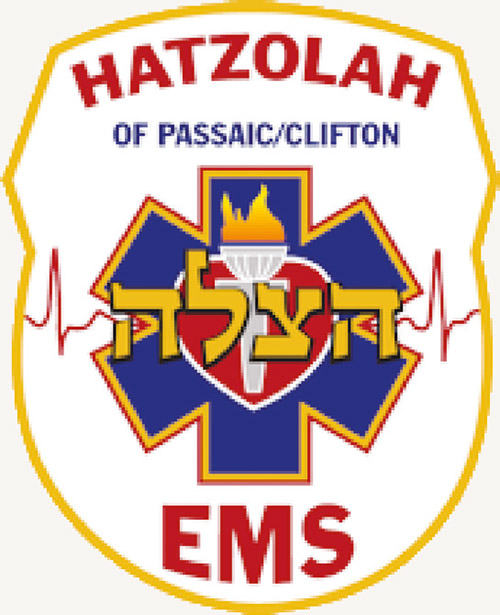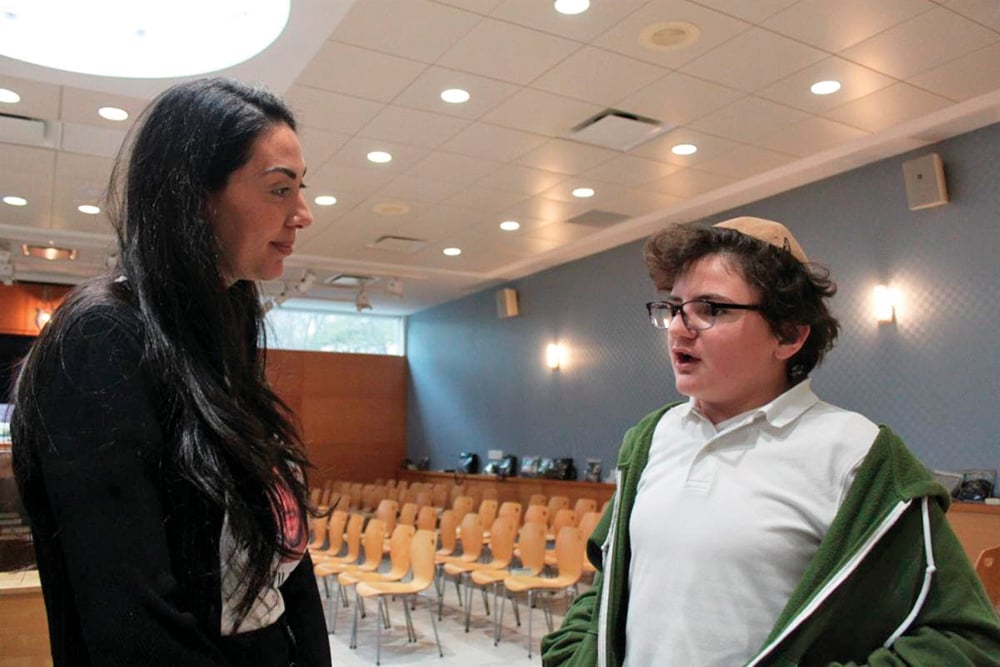
(Courtesy of SMGH) In August, four members of Hatzolah of Passaic-Clifton will begin their 200 clinical intern hours at St. Mary’s General Hospital as part of their paramedic certification education program at National Medical Education and Training Center, which is accredited by the Commission on Accreditation of Allied Health Education Programs. This is part of a very intense program divided into sections totaling a minimum of 1,168 hours, 10 months in didactic followed by 12-day labs and skills boot camp in Boston, the first HESI1 exam, after which the clinic portion begins.
Hatzolah Director Baruch Jaffe is one of the attendees and summarized the program: “NMETC is located in Boston and all classes are online via Zoom. Labs and skills are in person in Boston over 12-16 days. The instructors are fantastic and they really push for our success. The four of us are very happy we picked this program. And we appreciate St Mary’s partnering with them and us for our hospital time.”
What does this mean for our community? In addition to having an excellent team of emergency medical technicians (EMTs) responding promptly to calls, we will now have certified paramedics. The basic difference between EMTs and paramedics lies in their level of education and the kind of procedures they are allowed to perform. While EMTs can administer CPR, glucose and oxygen, paramedics can perform more complex procedures such as inserting IV lines, administering drugs and applying pacemakers.
EMTs, as the first responders, examine the nature and severity of injuries and transfer the patient in an ambulance to the hospital. They inform the hospital by radio about the number of patients being brought in and their injuries and illnesses. EMTs are also responsible for monitoring a patient’s condition until they reach a hospital and provide them with the care they need.
“I have been in the best of both worlds,” said George Matyjewicz, Ph.D. “I was executive director of Hatzolah for two years, and now I am community liaison at St. Mary’s General Hospital. While at Hatzolah I tracked the response time to reach a patient and it was/is always under 90 seconds! And when they bring a patient to St. Mary’s General, they go right in the ambulance emergency entrance and patients are treated immediately, as I was last month when they had to bring me to the E.D. [emergency department] due to a head injury.”
The NMETC program is live and interactive using a virtual classroom with an instructor present delivering the content each night. If the student is unable to attend the live presentation they have five days to attend in order to receive credit. The school has a 100% attendance policy requirement, and the student may go back and review any class at any time during their program. They have a very rigid syllabus that is instructor-led and deadline-driven, with two intense HESI exams based on the National Registry2. The clinical rotation is a minimum 200 hours and specific benchmarks as listed in the syllabus. NMETC has an extensive vetting process and a 97% first time written National Registry pass rate—the national average is 70%.
All paramedic educators at the school are currently licensed as paramedics, and all lead instructors hold an EMS instructor/coordinator license from the State Department of Health. Each of the educators who teach or evaluate airway management, specifically intubation, have completed the Dr. Ron Walls difficult airway program.
“We are pleased to be able to work with Hatzolah and NMETC in this wonderful program that will greatly benefit our community,” said Edward J. Condit, CEO of St. Mary’s General Hospital. “Our emergency department works hand in hand with Hatzolah to provide very professional and knowledgeable care to the frum community. Previously, Hatzolah has partnered with St. Mary’s General to educate hospital staff in frum guidelines and how best to cater to healthcare needs of the community.”
Condit added: “This program will add to our role as a center for higher learning and training of the medical professionals that care for our community, which includes existing formal affiliations with Seton Hall University, Touro College and St. George’s University Medical School. The hospital’s graduate medical education program, aptly named the Prime Health Care Consortium at St. Mary’s General and Saint Clare’s Denville Hospital, has been in place since 2020, graduating its first class of resident physicians last month. The program includes an internal medicine residency, as well a psychiatric medicine program. This year the hospital’s podiatry medicine residency program enters its 10th year of operation.”
St. Mary’s General Hospital—nationally recognized, locally preferred, with a Leapfrog “A”—is among the top hospitals in America for health, quality and patient safety. A center of excellence for maternal-child health, the hospital has almost 700 physicians and over 1,000 employees, with every staff member committed to providing respectful, personalized, high-quality care—to satisfy patients’ needs and exceed their expectations. St. Mary’s General is a proud member of Prime Healthcare, which has more Patient Safety Excellence Award recipients for five consecutive years (2016-2020) than any other health system in the country, including a “Top 15 Healthcare System” by Truven Health Analytics. To learn more about St. Mary’s General Hospital, visit https://www.smh-nj.com/ or Facebook at https://www.facebook.com/StMarysGeneral.
For more information, please contact George Matyjewicz, Ph.D., community liaison at [email protected]
1 Health Education Systems Inc.
2 The National Registry, a not-for-profit organization, is the nation’s Emergency Medical Services Certification organization, whose mission is to provide a valid, uniform process to assess the knowledge and skills required for competent practice by EMS professionals throughout their careers, and to maintain a registry of certification status.













